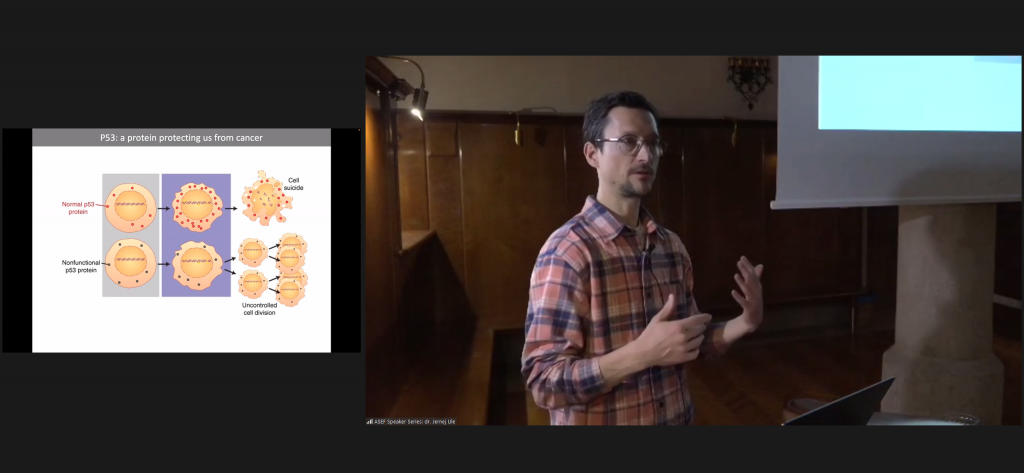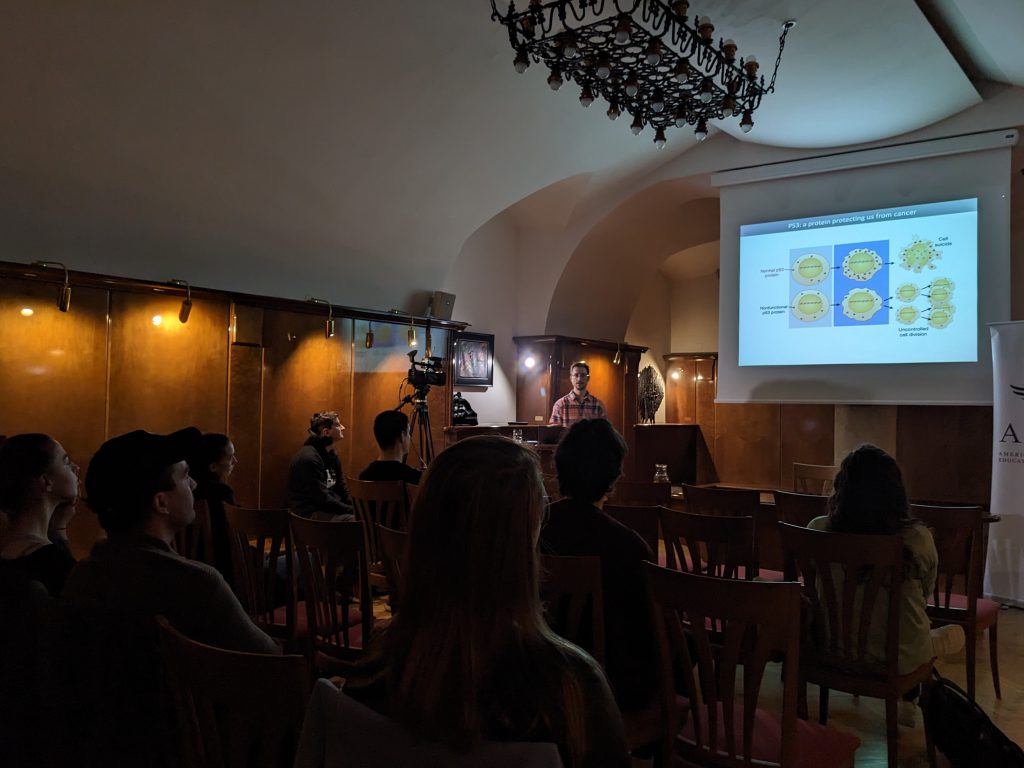
Retrotransposons: the “Trojan horses” of our genes
On Tuesday, March 14, ASEF Speaker Series lecture, where ASEF professors present their research areas and findings, took place. This time the speaker was Prof. Dr. Jernej Ule, a professor in the Department of Molecular Neuroscience at the University College London. He leads the RNA Network Research Group, based at the London Dementia Institute and the Institute of Chemistry in Ljubljana. The group studies protein-RNA complexes in neurons by developing new methods, such as iCLIP, to study protein-RNA contacts across the whole transcriptome. This is being used to understand how RNA regulation contributes to cellular function, how it is disrupted in disease, and how mutations cause disease by altering the assembly and dynamics of protein-RNA complexes. This work may open the door to the development of new therapeutic approaches to restore the proper functioning of protein-RNA complexes.
At the beginning of his lecture, Prof. Dr. Ule introduced the three types of RNA molecules and their functions but focused his lecture on the genes that encode proteins. He pointed out that only 1.5% of the human genome contains the information for the formation of proteins, while most of our genome is discarded, which has been a subject of research for many scientists.

He went on to point out that half of our genome is made up of retrotransposon and described this element in more detail. Those parts of our genome not incorporated into RNA molecules have retrotransposons, which have arisen in the genomes of different species and duplicate themselves. This duplication process occurs by creating an RNA molecule that uses cellular complexes to convert back into DNA.
Prof. Dr. Ule went on to describe Alu elements that are unique to primates. They are a shorter type of retrotransposon and do not have a gene for duplication, which means they use longer sequences for it. The protein binds RNA molecules made by Alu elements, which are like a kind of “Trojan horses”. Sometimes they can be converted into something useful, such as new RNA molecules, but there can also be negative effects if Alu elements are incorporated too quickly into genes – many diseases caused by Alu elements can occur.

Although these elements are dangerous, there are quite a lot of them in our genome. At a population level, they can even be beneficial, for example to the brain and immune tissues. At the end of the lecture, the speaker gave practical examples of how data from the laboratory can be analyzed and how a better understanding of retrotransposons can contribute to the treatment of many diseases.
The event was held in a hybrid format, both in the Prešeren Hall at SAZU and via Zoom, and was moderated by 2022 Junior Fellow Nastja Turkanović.

The event was organized with the support of the Government Office for Slovenians Abroad and the Office of the Republic of Slovenia for Youth.

